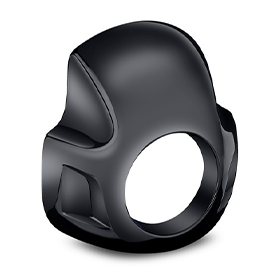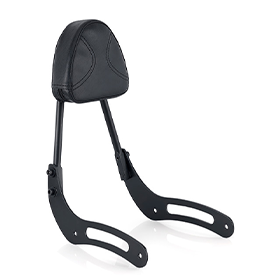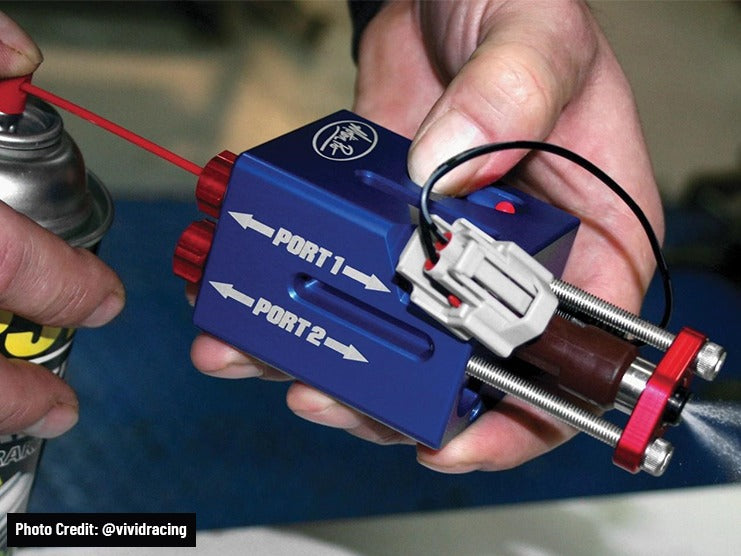No motorcycle camping checklist is complete without a sleeping bag. To ensure a comfortable camping experience, you need a quality sleeping bag to ensure you get a good night’s sleep.
Riders need sleeping bags that have optimal insulation at night and cushion them when resting on the hard ground. However, a sleeping bag alone will not guarantee comfort and warmth. You also need a sleeping bag liner, a pad, or an inflatable mattress to complement your sleeping bag.
This article focuses on how to choose the best sleeping bag for motorcycle camping. Once you acquire your sleeping bag, you can experiment with other camping accessories to see which provides the best sleep set-up in different weather conditions.
- Table of Contents
- 1. Features to Look for When Buying a Sleeping Bag for Motorcycle Camping
- 1.1 Determine Whether You Are a Warm or Cold Sleeper
- 1.2 Temperature Ratings
- 1.3 Determine Comfort and Lower Limit
- 1.4 Types of Insulations Available in Sleeping Bags
- 1.5 Shape of Sleeping Bags
- 1.6 Motorcycle Camping Sleeping Bag Fabrics & Coatings
- 2. Look for Zippers Guards, Pockets, & Other Useful Features
- 3. Takeaway
1. Features to Look for When Buying a Sleeping Bag for Motorcycle Camping
Motocamping involves sleeping out in different weather conditions. Brands that cater to motocampers have introduced sleeping bags with advanced features that make them suited for all types of campgrounds. Though there is no shortage of sleeping bags to choose from on the market, it can be difficult to decide which sleeping bag is the best. Other than the price, there are other factors to keep in mind before purchasing a sleeping bag for your motorcycle camping trip.
1.1 Determine Whether You Are a Warm or Cold Sleeper
When purchasing a sleeping bag, make sure it has adequate insulation to ensure you stay warm and in wintry conditions. However, some motorcycle campers prefer to stay cool when they are sleeping, especially in warm weather. They also may not want a sleeping bag with a lot of warm layers and insulation even on cold nights. Before you buy a sleeping bag out there, determine whether you prefer to sleep with it cool or warm. Afterwards, you can determine which saddlebag is best based on temperature ratings and similar features.
1.2 Temperature Ratings
Some riders buy sleeping bags based on their temperature ratings. Temperature ratings help you determine how well a sleeping bag retains heat in different weather and temperatures. Although it is important to check the temperature rating of a sleeping bag, it is best not to base your decision too much on these ratings.
Temperature ratings are measured in controlled environments and are accurate only to a certain degree. If you enjoy dispersed motorcycle camping, you need a sleeping bag best suited for unpredictable weather.
Temperature ratings become essential when traveling to campgrounds at higher altitudes or experience significant drops in temperature. For summer motorcycle camping, you would need a sleeping bag that will keep you comfortable without causing hot flashes and sweating. When using a warm sleeping bag during the summer, the best way to avoid overheating is to sleep on top of the bag or unzip it to ensure ventilation.
If you prefer summer camping, then a sleeping bag with a 20°F temperature rating is recommended. For winters, a 0°F sleeping bag with a temperature range of 5°F-32°F is best. The downside of a 0°F sleeping bag is that they are bulky and take up a lot of space on your motorcycle, making it difficult to pack all the essentials.
1.3 Determine Comfort and Lower Limit
Sleeping bags come with two ratings: a comfort limit and a lower limit. For example, a 0° sleeping bag would have a 32°F comfort limit and a 5°F lower limit.
The comfort limit indicates the lowest temperature a cold sleeper would feel comfortable, while the lower limit shows the lowest temperature a warm sleeper would feel comfortable.
Therefore, cold sleepers should focus on the comfort limit when looking for a sleeping bag. This value will help you determine the maximum insulation the sleeping bag will provide. If you are camping at a location where the temperature can drop to 20°F, then purchase a sleeping bag with a comfort limit of 20°F and a lower limit of around 15°F or less.
If you are a warm sleeper and often wake up at night feeling hot and sweaty, then choose a sleeping bag based on its lower limit. For summer and spring camping, a 20°F sleeping bag is the best option.
1.4 Types of Insulations Available in Sleeping Bags
Down Insulation
Down insulation sleeping bags are a popular choice for motorcycle campers who prefer to travel light. These bags are soft, and comfortable, and provide adequate insulation in colder weather.
Down insulated sleeping bags are more durable and have the highest warmth-to-weight ratio. However, the biggest drawback of the down insulation is that it does not retain heat well when wet. The feathers tend to clump together when wet, reducing the fluff and insulation of the sleeping bag. In addition, the down insulation layer takes a long time to dry. To help keep them dry, riders cover the bags with water-resistant sprays and coatings.
Riders also have difficulty finding a sustainable down insulation sleeping bag whose feathers were not sourced from the fluff of birds slaughtered for meat.
If you want to purchase a down insulated sleeping bag, check its fill power. Fill power helps you determine the quality of the down by measuring how many cubic inches about 1 oz of down can fill.
Higher fill power indicates better loft and insulation. Down sleeping bags with 450-900 fill power provide better insulation to ensure a comfortable motorcycle camping experience.
Down insulated sleeping bags are lightweight and comfortable, best suited for camping in cooler regions with little or no precipitation.
| Down Insulated Sleeping Bags | |
|---|---|
| Pros | Cons |
| Better Warmth to Weight Ratio Compressible Small Pack Size Durable Long-Lasting |
Feathers Not Sourced Responsibly Expensive Less Insulation When Wet Takes Longer to Dry |
Synthetic Insulation
Synthetic insulation sleeping bags provide better protection in rain and tend to dry out quickly if caught in heavy rain. They retain heat even when wet, offering optimal insulation in rain or snow.
Synthetic insulation sleeping bags are cheaper, durable, and long-lasting, making them suited for riders who camp often on rugged terrain.
The only drawback of synthetic insulation sleeping bags is their low warmth to weight ratio. Warmer synthetic insulation sleeping bags are bulkier and take up twice as much room as a down insulation sleeping bag.
Due to their weight and size, synthetic insulation sleeping bags are best for short summer or spring camping trips at the nearest campgrounds.
| Synthetic Insulated Sleeping Bags | |
|---|---|
| Pros | Cons |
| Not Sensitive to Moisture Retain Heat Even When Wet Dry Quickly Cheaper Suitable for All Weather Conditions |
Large Pack Size Bulky |
Loose Fit Insulation
Loose fit insulation is a synthetic version of down insulation. High-quality loose fit insulation sleeping bags have innovative Loft-Teck insulation which features silicone coated hollow-filament polyester fiber measuring 2.5 denier.
The small fibers ensure high insulation efficiency, while the silicone coating prevents clumping due to being water-resistant. Plus, they are an alternative option for riders who object to killing animals for their fluff.
High-quality loose fit insulation sleeping bags have 450-550 fill power. They are comfortable, soft, and have a high warmth to weight ratio. In addition, loose fit insulation sleeping bags possess all the positive traits of synthetic insulation sleeping bags. They are cheaper, water-resistant, dry quick, and suitable for all weather conditions.
Loose fit insulated sleeping bags are water-resistant but do not retain a lot of heat. Purchase loose fit insulated sleeping bags for campgrounds that get rain but are not too cold, especially at night.
| Loose Fit Insulated Sleeping Bags | |
|---|---|
| Pros | Cons |
| Cheaper Water-Resistant Heat Retention Quick Drying High Warmth to Weight Ratio Compressible Lightweight Takes Up Less Space |
450-550 fill power may not be as efficient as real down because it is less lofty and compresses more |
Hybrid Insulation
Hybrid insulation is similar to loose fit insulation, being a blend of down and synthetic insulation. The only difference between loose fit and hybrid insulation is that the former mimics a low quality down with 450-550 fill power, while the latter is much like high-quality down due to its 600-800+ fill power.
Hybrid insulation features synthetic fibers that ensure optimal warmth and remain lofted even when wet. If the sleeping bag is exposed to heavy rain, its loft won’t collapse. Moreover, hybrid insulation sleeping bags are lightweight, easy to pack and carry, and can be compressed.
If you want to pack light and plan to ride to areas with high precipitation, a hybrid insulation sleeping bag is the best option as it will help keep you warm, dry, and comfortable in all weather conditions.
| Hybrid Insulated Sleeping Bags | |
|---|---|
| Pros | Cons |
| Water-Resistant Heat Retention Quick Drying High Warmth to Weight Ratio Compressible Lightweight Takes Up Less Space 600-800 Fill Power Comfortable |
Expensive |
1.5 Shape of Sleeping Bags
To sleep comfortably, you need a sleeping bag that best fits the shape of your body. Motorcycle camping sleeping bags can come in the following shapes:
Mummy Shaped Narrow Sleeping Bags
Long, mummy shaped sleeping bags offer a snug fit and maximum heat retention as the insulating fill/layer inside the bag are pressed close to the body. However, the close fit may reduce airflow during summer, causing suffocation and discomfort in hot and humid conditions.
There is not much room inside this sleeping bag to move around and will move with you if you shift around while asleep. Some people prefer the mummy shape for its compact size, while others find it restrictive and uncomfortable.
Mummy bags have a small pack size, are lightweight, and can easily fit in motorcycle’s saddlebags or tail bags.
| Mummy Shaped Narrow Sleeping Bags | |
|---|---|
| Pros | Cons |
| Suitable for Wintery Conditions Lightweight Small Pack Size |
Restricted Mobility Snug Fit Can Feel Suffocating in Summer |
Wide Rectangular Sleeping Bags
Wide rectangular sleeping bags are spacious and offer better mobility, making them better suited for summer camping. However, it has less insulation due to the lining being thin. Therefore, rectangular sleeping bags are not suitable for high altitudes and extreme cold. Instead, they can provide warmth on cool nights during fall and spring.
The rectangular sleeping bags are the heaviest out of the sleeping bag shapes. They cannot fold into a smaller size and take up more space when stored inside motorcycle luggage or sissy bar bags.
| Wide Rectangular Sleeping Bags | |
|---|---|
| Pros | Cons |
| Mobility Better Ventilation Adequate Insulation for Cool Temperatures Loose Fit |
Not Suited for Cold Temperatures Bulky |
Semi-Rectangular Sleeping Bags
Semi-rectangular sleeping bags are a blend of mummy and rectangular sleeping bags, having the best traits of both sleeping bag shapes. This sleeping bag is lightweight, has a small pack size, and has the right balance between mobility and insulation.
The semi-rectangular sleeping bags have neither a loose or a tight fit, making it easier for riders to move around. This sleeping bag offers adequate warmth on cold nights and ventilation in hot weather.
| Semi-Rectangular Sleeping Bags | |
|---|---|
| Pros | Cons |
| Lightweight Better Ventilation Better Insulation Mobility |
Not Suited for Cold Temperatures |
1.6 Motorcycle Camping Sleeping Bag Fabrics & Coatings
Sleeping bags made of ripstop fabric are durable, making them ideal for motorcycle camping. Ripstop fabric prevents tearing, keeping holes from forming and preventing any small rips or tears from getting bigger.
As ripstop sleeping bags are made of nylon or polyester fibers; they are absorbent and do not dry out quickly. To make your sleeping bag waterproof, you would need to look for and apply a waterproof coating. If you plan to go on a long motorcycle camping trip, spray your sleeping bags with antibacterial or antimicrobial chemicals. When camping near lakes, rivers, or forests, antibacterial or antimicrobial sprays help prevent fungal growth on your sleeping bag.
2. Look for Zippers Guards, Pockets, & Other Useful Features
Check the quality of the zippers and zipper guards when buying a sleeping bag. Zippers that get caught on the fabric or stuck in place can result in a torn sleeping bag and broken zippers. To ensure the zippers open and close smoothly, make sure the sleeping bag is equipped with a zipper shield, an EMI solution for zipper track closure.
Have you ever slept with only one foot sticking out of the blanket? At times we feel overheated even in cooler temperatures, and exposing our feet or hands to cold air can help regulate your body temperature. If you prefer doing this practice, look for sleeping bags with two-way zippers. This way, you can open up the bottom side of the sleeping bag for better ventilation.
Inner pockets and stuff sacks are other useful features to look for in a motocamping sleeping bag. You can put your phone, medication, small flashlight, cash, bug spray, spare socks, motorcycle keys, and other small belongings in your pockets.
Sleeping bags manufactured by top-tier motocamping brands come with durable stuff sacks which you can store your sleeping bag inside. If your sleeping bag does not come with a storage sack, buy one separately.
3. Takeaway
Staying comfortable when in the great outdoors is the goal of every motorcycle camper. To ensure better comfort, riders should invest in a high-quality sleeping bag. But before you choose the right sleeping bag, it is important to know whether you like sleeping warm or cool. Otherwise, you will not be able to narrow down what features to look for in a sleeping bag.
A hybrid insulated sleeping bag in a semi-rectangular shape tends to work best for all motorcycle camping styles. You can also get a three-season sleeping tent with a waterproof and antimicrobial coating to ensure a comfortable sleep set-up.
Also Read: How to Choose the Best Motorcycle Camping Tent - Beginners’ Buyer Guide
















Leave a comment
All comments are moderated before being published.
This site is protected by reCAPTCHA and the Google Privacy Policy and Terms of Service apply.